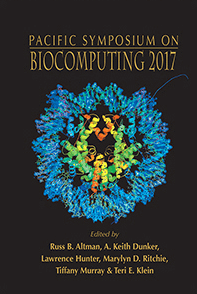
Halla Kabat1, Leo Tunkle1, Inhan Lee2
1Outreach Program, miRcore
2miRcore
Email: halla203@gmail.com, leotunkle@gmail.com, inhan@mircore.org
Pacific Symposium on Biocomputing 22:438-448(2017)
© 2017 World Scientific
Open Access chapter published by World Scientific Publishing Company and distributed under the terms of the Creative Commons Attribution (CC BY) 4.0 License.
Given the diverse molecular pathways involved in tumorigenesis, identifying subgroups among cancer patients is crucial in precision medicine. While most targeted therapies rely on DNA mutation status in tumors, responses to such therapies vary due to the many molecular processes involved in propagating DNA changes to proteins (which constitute the usual drug targets). Though RNA expressions have been extensively used to categorize tumors, identifying clinically important subgroups remains challenging given the difficulty of discerning subgroups within all possible RNA-RNA networks. It is thus essential to incorporate multiple types of data. Recently, RNA was found to regulate other RNA through a common microRNA (miR). These regulating and regulated RNAs are referred to as competing endogenous RNAs (ceRNAs). However, global correlations between mRNA and miR expressions across all samples have not reliably yielded ceRNAs. In this study, we developed a ceRNA-based method to identify subgroups of cancer patients combining DNA copy number variation, mRNA expression, and microRNA (miR) expression data with biological knowledge. Clinical data is used to validate identified subgroups and ceRNAs. Since ceRNAs are causal, ceRNA-based subgroups may present clinical relevance. Using lung adenocarcinoma data from The Cancer Genome Atlas (TCGA) as an example, we focused on EGFR amplification status, since a targeted therapy for EGFR exists. We hypothesized that global correlations between mRNA and miR expressions across all patients would not reveal important subgroups and that clustering of potential ceRNAs might define molecular pathway-relevant subgroups. Using experimentally validated miR-target pairs, we identified EGFR and MET as potential ceRNAs for miR-133b in lung adenocarcinoma. The EGFR-MET up and miR-133b down subgroup showed a higher death rate than the EGFR-MET down and miR-133b up subgroup. Although transactivation between MET and EGFR has been identified previously, our result is the first to propose ceRNA as one of its underlying mechanisms. Furthermore, since MET amplification was seen in the case of resistance to EGFR-targeted therapy, the EGFR-MET up and miR-133b down subgroup may fall into the drug non-response group and thus preclude EGFR target therapy.